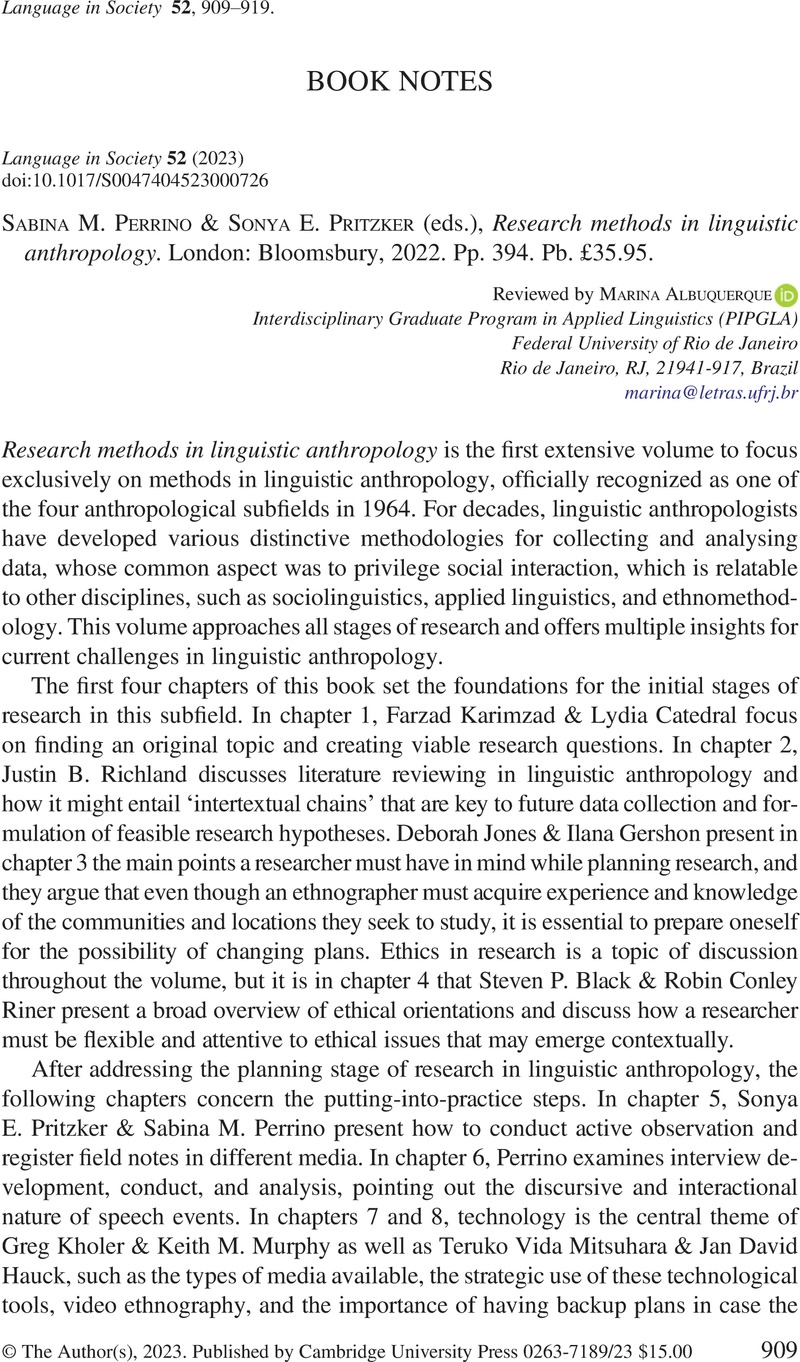No CrossRef data available.
Article contents
Sabina M. Perrino & Sonya E. Pritzker (eds.), Research methods in linguistic anthropology. London: Bloomsbury, 2022. Pp. 394. Pb. £35.95.
Review products
Sabina M. Perrino & Sonya E. Pritzker (eds.), Research methods in linguistic anthropology. London: Bloomsbury, 2022. Pp. 394. Pb. £35.95.
Published online by Cambridge University Press: 01 December 2023
Abstract
An abstract is not available for this content so a preview has been provided. Please use the Get access link above for information on how to access this content.

- Type
- Book Notes
- Information
- Copyright
- Copyright © The Author(s), 2023. Published by Cambridge University Press



